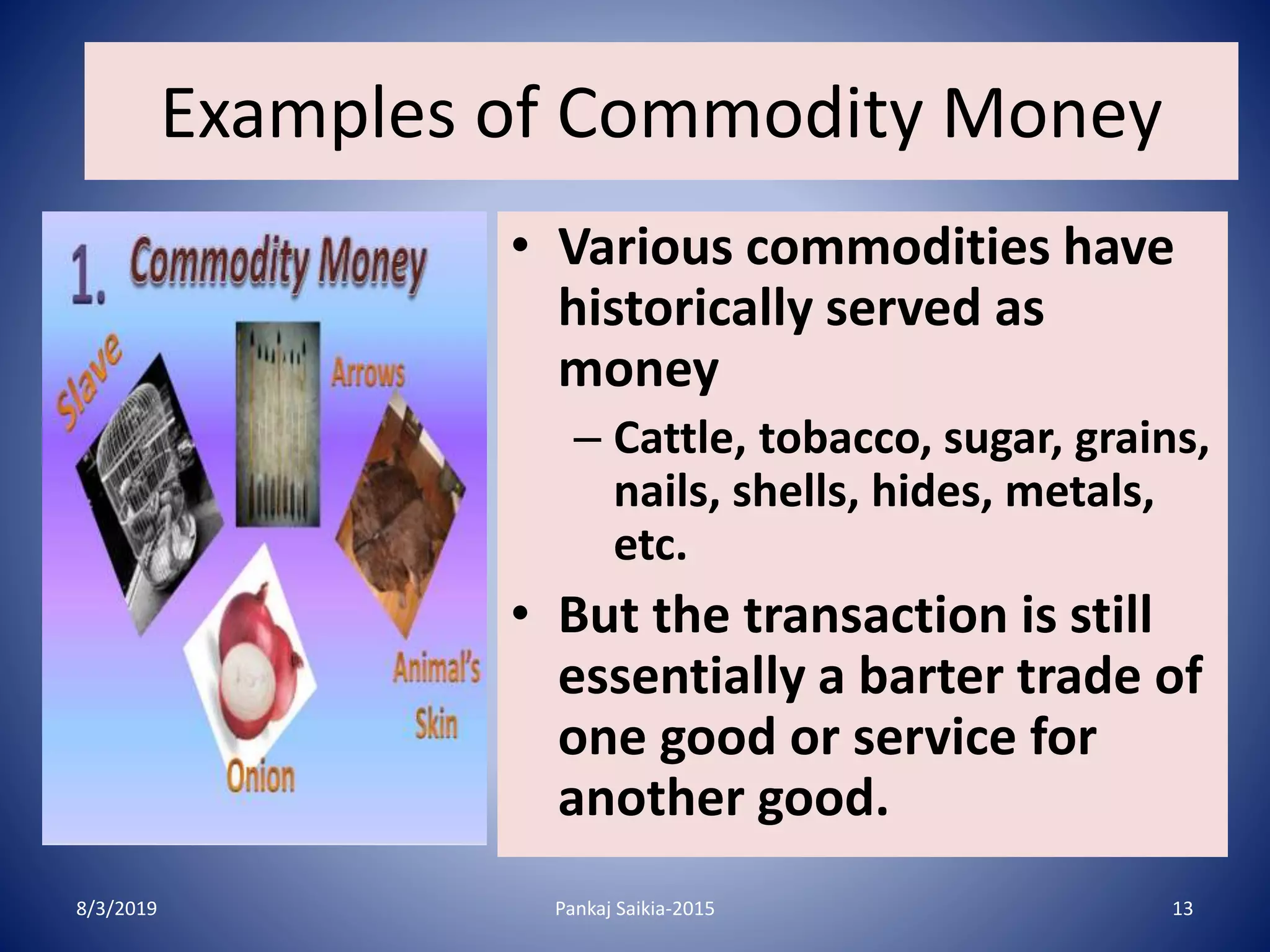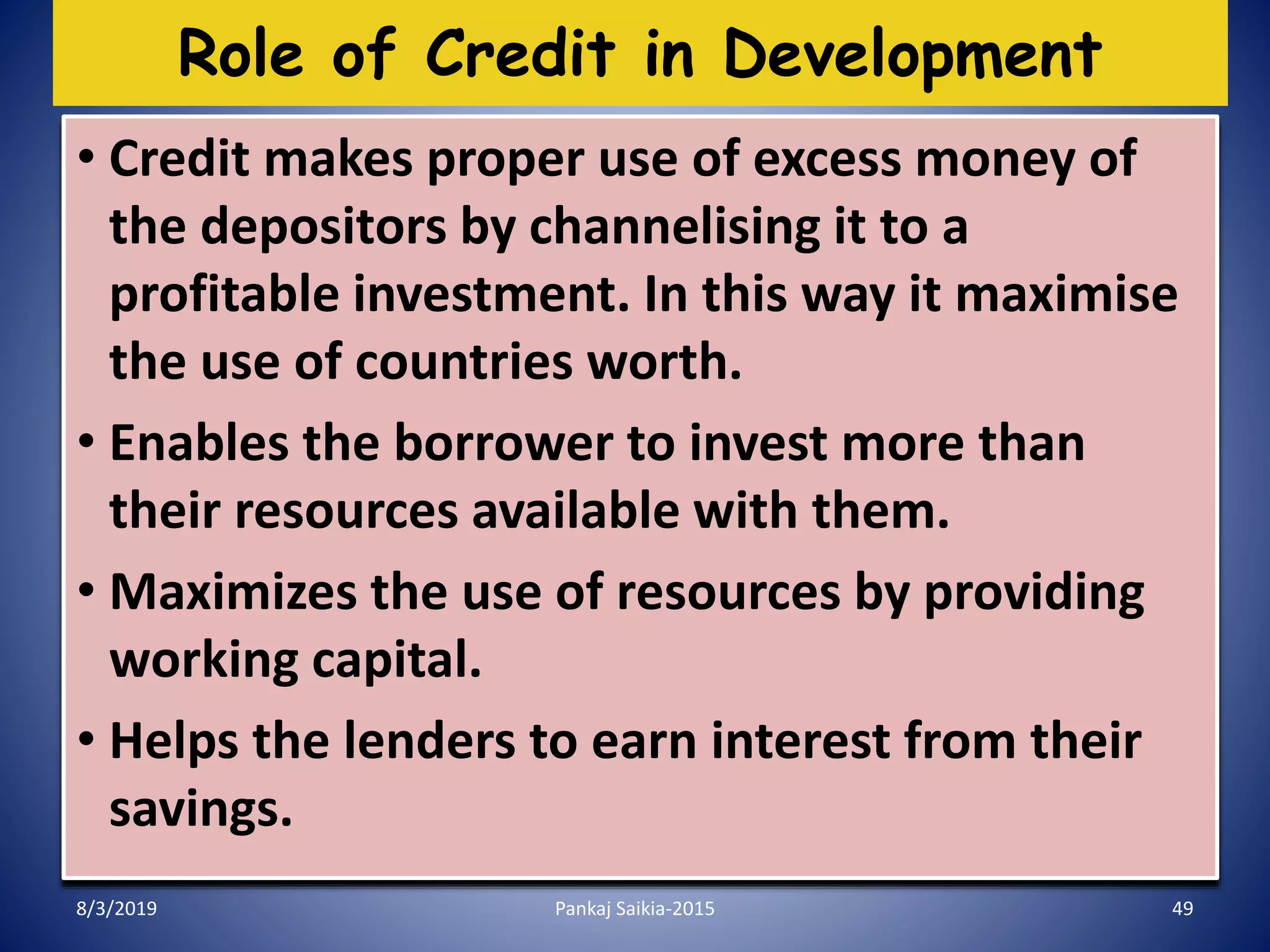The document provides an overview of money and credit, including the evolution of money from barter systems to modern forms such as demand deposits and credit. It highlights the functions of money, the role of banks, types of deposits, and the importance of credit in economic development, along with formal and informal sources of credit. Additionally, it outlines the advantages and limitations of both credit sources, emphasizing the need for careful management to avoid debt traps.



































































